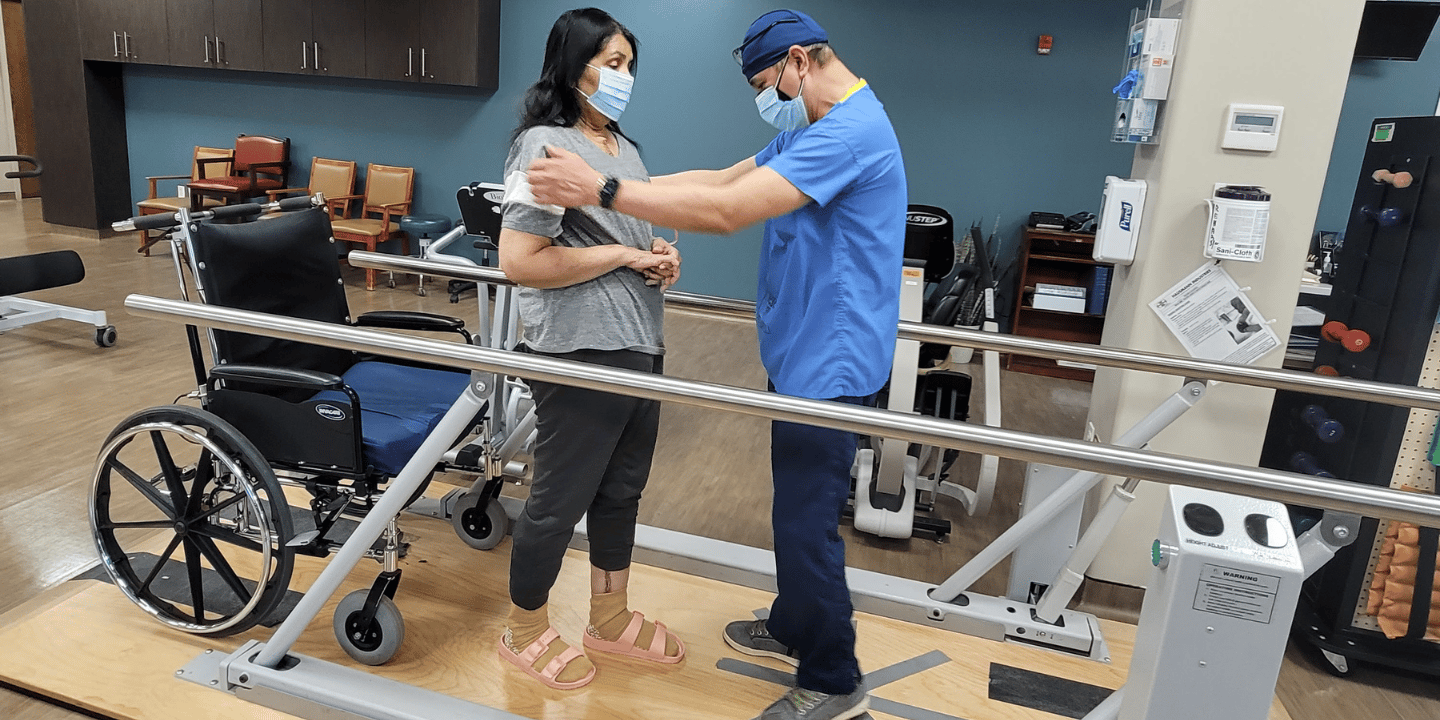There are several ways outpatient rehabilitation can help patients recover from surgery, injury, or illness. Depending on your condition, you may benefit from physical therapy, occupational therapy, speech therapy, or a combination of these.
Outpatient Rehabilitation After Surgery
Patients commonly receive outpatient rehabilitation following surgery. Joint replacement is a common surgery type that benefits from receiving physical therapy as part of the post-surgery recovery process.
For example, if you have a hip or knee replacement, your physical therapist will work with you to help build up muscles around your knee to support the new joint. They will also help you learn how to walk properly with your new joint and recommend an exercise routine to help you build strength.
Outpatient Rehabilitation After an Injury or Accident
Therapy needs can vary widely depending on the type of injury or accident. For example, someone recovering from a broken leg would likely receive a different combination of therapy than someone with a traumatic brain injury.
Physical therapists will focus on exercises to help regain strength, balance, function, falls prevention, and more. Occupational therapists focus on skills needed to perform activities of daily living like cooking, cleaning, self-care, hand-eye coordination, and memory. Finally, speech therapists help with verbal communication, social skills, reading and writing, eating and swallowing, and more.
Outpatient Rehabilitation After an Illness or Event
Much like for patients recovering from an injury or accident, outpatient rehabilitation needs after an illness will vary depending on each patient’s needs. Common conditions that can benefit from receiving post-illness or event include heart attack, stroke, or cancer.
We are also proud partners of the Rogosin Institute, and our in-facility hemodialysis center also offers inpatient and outpatient treatment for patients with kidney-related conditions.
Therapy for patients recovering from these illnesses often begins in the hospital before discharge. Again, the type of therapy recommended will vary for each patient – but a combination of physical, occupational, and speech therapy is commonly prescribed.
Outpatient vs. Inpatient Rehabilitation
So, what is the difference between outpatient rehabilitation and inpatient rehabilitation? Outpatient rehabilitation is offered to patients a certain number of days per week for a number of weeks until the patient’s goals have been met. The patient arrives at the rehabilitation center for their outpatient therapy session, and they return home after it is complete.
Inpatient rehabilitation occurs when the patient may not yet be well enough to return to their home environment. In this case, they live in a short-term rehab center as an inpatient, receiving 24-hour care alongside their rehabilitation sessions.
If you aren’t sure which option will be best for you, don’t worry. Your physician will recommend which option will be best for your needs.
About the Methodist Home
The Methodist Home for Nursing and Rehabilitation is a five-star rated skilled nursing facility in Riverdale, New York. We specialize in short-term sub-acute stays with a focus to help patients regain strength to safely return home following surgery, injury, or illness.

